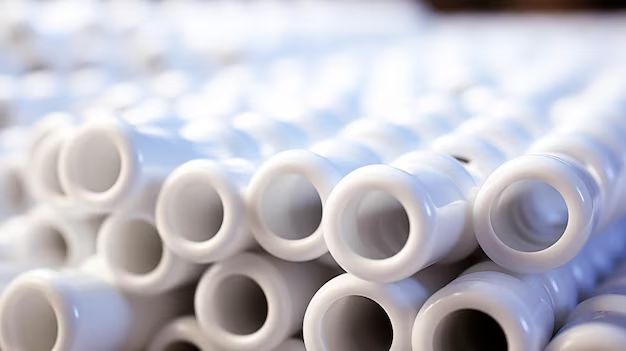PVC, or polyvinyl chloride, is a versatile plastic material used for many applications including furniture. When used for furniture, PVC is available in different grades that determine its strength and weight-bearing capacity. Knowing the weight limits of furniture grade PVC is important for assessing its suitability for different applications.
Page Contents
What is Furniture Grade PVC?
Furniture grade PVC is a type of PVC plastic formulated specifically for use in manufacturing furniture. It has certain properties that make it well-suited for furniture:
- Durability – It is highly resistant to abrasion and cracking.
- Strength – It has higher tensile strength compared to standard PVC.
- Stability – It retains its shape and structural integrity with temperature fluctuations.
- Aesthetics – It can be easily molded into various shapes and profiles.
- Cost – It is relatively affordable compared to other furniture-making materials.
The term “furniture grade PVC” is used to distinguish this type of PVC from other forms used in plumbing, construction, packaging etc. Furniture grade PVC comes in two main types:
1. Rigid PVC
Rigid PVC is hard, inflexible and can be used structurally. It is sturdier than flexible PVC.
2. Flexible PVC
Flexible PVC can bend and flex. It is used where some pliability is required in furniture design.
Weight Bearing Capacity
The maximum weight that furniture made from PVC can withstand depends on:
- Type of PVC used – rigid or flexible
- Thickness of the PVC sheets/profiles
- Reinforcements added to the PVC
- Design of the furniture piece
Rigid PVC
Rigid PVC is stronger and can bear more weight. Some typical weight capacities:
| PVC Thickness | Weight Bearing Capacity |
|---|---|
| 5 mm | Approx. 100 kg |
| 8 mm | Approx. 150 kg |
| 10 mm | Approx. 175 kg |
| 12 mm | Approx. 200 kg |
| 19 mm | Approx. 300 kg |
Reinforced rigid PVC can bear even higher loads. For example, 19 mm thick PVC reinforced with aluminum profiles can withstand over 500 kg.
Flexible PVC
Flexible PVC has lower load bearing capacity. Some examples:
| PVC Thickness | Weight Bearing Capacity |
|---|---|
| 1 mm | Approx. 15 kg |
| 2 mm | Approx. 30 kg |
| 3 mm | Approx. 50 kg |
Thicker flexible PVC, reinforced with fiberglass for example, can support higher loads. A 6 mm thick flexible PVC sheet reinforced with fiberglass rods can hold approx. 90 kg.
Factors Affecting Weight Capacity
The maximum weight capacity depends on several factors:
1. PVC thickness
Thicker PVC can bear more weight. For rigid PVC, capacity can increase from 100 kg for 5 mm thickness to 300 kg for 19 mm.
2. Reinforcements
Adding reinforcements like aluminum, steel or fiberglass dramatically increases strength. A 19 mm PVC sheet reinforced with aluminum profiles can hold over 500 kg.
3. Furniture design
The exact design of the furniture piece affects how much load it can take. Proper structural support through braces, hinges, corner joints etc. allows for higher weight capacity.
4. Type of usage
Static uniform loading causes less stress than dynamic non-uniform loading. For example, an office chair has higher capacity than a rocking chair.
5. Environmental factors
Sustained exposure to heat or sunlight can degrade PVC over time, reducing its strength. Weight limits may need to be de-rated for outdoor furniture use.
Typical Applications and Weight Limits
Here are some common applications of furniture grade PVC and typical weight capacities:
Chairs
- Arm chair (indoors) – 100 kg (with rigid PVC frame)
- Rocking chair (outdoors) – 80 kg (with reinforced flexible PVC slats)
- Bar stool – 120 kg (with steel reinforced PVC legs)
Tables
- Indoor dining table – 100 kg (with rigid PVC understructure)
- Outdoor patio table – 80 kg (with aluminum reinforced PVC top)
Shelves
- Wall shelves – 15 kg per 25 cm width (with 2mm flexible PVC)
- Kitchen cabinets – 50 kg per 25 cm width (with 5mm rigid PVC)
Beds
- Single bed – 150 kg (with 10mm reinforced rigid PVC frame)
- Bunk bed – 100 kg per bed (with steel reinforced PVC frames)
Conclusion
The weight bearing capacity of PVC furniture can range widely from 15 kg to over 500 kg depending on the grade, thickness, reinforcements and design. Rigid PVC offers higher strength while flexible PVC provides more bendability. With adequate structural support through corner joints, braces and reinforcements, PVC can withstand substantial loads for various indoor and outdoor furniture applications.
